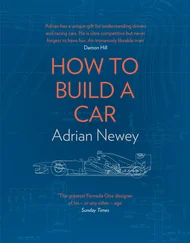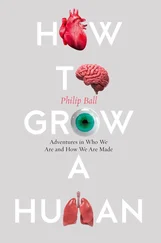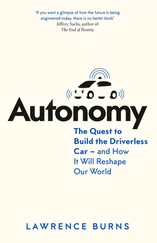Eyal, Nir - Hooked - How to Build Habit-Forming Products
Здесь есть возможность читать онлайн «Eyal, Nir - Hooked - How to Build Habit-Forming Products» весь текст электронной книги совершенно бесплатно (целиком полную версию без сокращений). В некоторых случаях можно слушать аудио, скачать через торрент в формате fb2 и присутствует краткое содержание. Год выпуска: 2014, Издательство: Nir Eyal, Жанр: Старинная литература, на английском языке. Описание произведения, (предисловие) а так же отзывы посетителей доступны на портале библиотеки ЛибКат.
- Название:Hooked: How to Build Habit-Forming Products
- Автор:
- Издательство:Nir Eyal
- Жанр:
- Год:2014
- ISBN:нет данных
- Рейтинг книги:5 / 5. Голосов: 1
-
Избранное:Добавить в избранное
- Отзывы:
-
Ваша оценка:
- 100
- 1
- 2
- 3
- 4
- 5
Hooked: How to Build Habit-Forming Products: краткое содержание, описание и аннотация
Предлагаем к чтению аннотацию, описание, краткое содержание или предисловие (зависит от того, что написал сам автор книги «Hooked: How to Build Habit-Forming Products»). Если вы не нашли необходимую информацию о книге — напишите в комментариях, мы постараемся отыскать её.
Hooked: How to Build Habit-Forming Products — читать онлайн бесплатно полную книгу (весь текст) целиком
Ниже представлен текст книги, разбитый по страницам. Система сохранения места последней прочитанной страницы, позволяет с удобством читать онлайн бесплатно книгу «Hooked: How to Build Habit-Forming Products», без необходимости каждый раз заново искать на чём Вы остановились. Поставьте закладку, и сможете в любой момент перейти на страницу, на которой закончили чтение.
Интервал:
Закладка:
Careful introspection can uncover opportunities for building habit-forming products. As you go about your day, ask yourself why you do, or do not do, certain things and how those tasks could be made easier or more rewarding.
Observing your own behavior can inspire the next habit-forming product or inform a breakthrough improvement to an existing solution. Below, you’ll find other hotbeds for innovation opportunities — think of them as shortcuts for uncovering existing behaviors that are ripe for successful business development based on forming new user habits.
Nascent Behaviors
Sometimes technologies that appear to cater to a niche will cross into the mainstream. Behaviors that start with a small group of users can expand to a wider population, but only if they cater to a broad need. However, the fact that the technology is at first used only by a small population often deceives observers into dismissing the product's true potential.
A striking number of world-changing innovations were written off as mere novelties with limited commercial appeal. George Eastman’s Brownie camera, preloaded with a film roll and selling for just $1, was originally marketed as a child’s toy. [cxxxiv]Established studio photographers saw the device as little more than a cheap plaything.
The invention of the telephone was also dismissed at first. Sir William Preece, the chief engineer of the British Post Office famously declared, "The Americans have need of the telephone, but we do not. We have plenty of messenger boys." [cxxxv]
In 1911, Ferdinand Foch the future Commander-in-Chief of the Allied Armies in WWI said, "Airplanes are interesting toys but of no military value." [cxxxvi]
In 1957, the editor of business books for Prentice Hall told his publisher, “I have traveled the length and breadth of this country and talked with the best people, and I can assure you that data processing is a fad that won't last out the year.”
The Internet itself, and each successive wave of innovation, has continually received criticism for its inability to gain mass appeal. In 1995, Clifford Stoll wrote a Newsweek article titled, “The Internet? Bah!” where he declared, “The truth is no online database will replace your daily newspaper…” Stoll continued, “...we’ll soon buy books and newspapers straight over the Internet. Uh, sure.” [cxxxvii]
But of course, now we do read books and newspapers over the Internet. When technologies are new, people are often skeptical. Old habits die hard and few people have the foresight to see how new innovations will eventually change their routines. However, by looking to early adopters who have already developed nascent behaviors, entrepreneurs and designers can identify niche use cases, which can be taken mainstream.
For example, in its early days, Facebook was only used by Harvard students. The service mimicked an offline behavior familiar to all college students at the time: Perusing a printed book of student faces and profiles. After finding popularity at Harvard, Facebook rolled out to other Ivy League schools, and then, to college students nationwide. Next came high school kids and later, employees at select companies. Finally, in September of 2006, Facebook was opened to the world. Today, Facebook is used by over a billion people. What first began as a nascent behavior at one campus became a global phenomenon catering to the fundamental human need for connection to others.
As discussed early in the book, many habit-forming technologies begin as “vitamins” — nice-to-have products that, over time, become must-have “painkillers” by relieving an itch or pain. It is revealing that so many breakthrough technologies and companies, from airplanes to Airbnb, were at first dismissed by critics as toys or niche markets. Looking for nascent behaviors among early adopters can often uncover valuable new business opportunities.
Enabling Technologies
Mike Maples, Jr., a Silicon Valley “super angel” investor, likens technology to big-wave surfing. In 2012, Maples blogged, “In my experience, every decade or so, we see a major new tech wave. When I was in high school, it was the PC revolution. I made my career as an entrepreneur at the end of the client/server wave and in the early phases of the Internet wave. Today, we are at the mass adoption phase of the social networking wave. I am obsessed with these technology waves and have spent a lot of time studying how they develop and what patterns can be observed.”
Maples believes technology waves follow a three-phase pattern, “They start with infrastructure. Advances in infrastructure are the preliminary forces that enable a large wave to gather. As the wave begins to gather, enabling technologies and platforms create the basis for new types of applications that cause a gathering wave to achieve massive penetration and customer adoption. Eventually, these waves crest and subside, making way for the next gathering wave to take shape.” [cxxxviii]
Entrepreneurs looking for windows of opportunity would be wise to consider Maples’ metaphor. Wherever new technologies suddenly make a behavior easier, new possibilities are born. Oftentimes, the creation of a new infrastructure opens up unforeseen ways to make other actions simpler or more rewarding. For example, the Internet was first made possible because of the infrastructure commissioned by the United States government during the Cold War. Then, enabling technologies such as dial-up modems, and later, high-speed Internet connections, provided access to the web. And finally, HTML, web browsers and search engines — the application layer — made browsing possible on the World Wide Web. At each successive stage, previous enabling technologies allowed new behaviors and businesses to flourish.
Identifying areas where a new technology makes cycling through the Hook Model faster, more frequent, or more rewarding provides fertile ground for developing new habit-forming products.
Interface Change
Technological changes often create opportunities to build new hooks. However, sometimes no technology change is required. Many companies have found success in driving new habit formation by identifying how changing user interactions can create new routines.
Whenever a massive change occurs in the way people interact with technology, expect to find plenty of opportunities ripe for harvesting. Changes in interface suddenly make all sorts of behaviors easier. Subsequently, when the effort required to accomplish an action decreases, usage tends to explode.
A long history of technology businesses made their fortunes discovering behavioral secrets made visible because of a change in the interface. Apple and Microsoft succeeded by turning clunky terminals into graphical user interfaces accessible by mainstream consumers. Google simplified the search interface as compared to those of ad-heavy and difficult-to-use competitors such as Yahoo! and Lycos. Facebook and Twitter turned new behavioral insights into interfaces that simplified social interactions online. In each case, a new interface made an action easier and uncovered surprising truths about user behaviors.
More recently, Instagram and Pinterest have capitalized on behavioral insights brought about by interface changes. Pinterest’s ability to create a rich canvas of images — utilizing what were then cutting-edge interface changes — revealed new insights about the addictive nature of an online catalog. For Instagram, the interface change was cameras integrated into smartphones. Instagram discovered that its low-tech filters made relatively poor-quality smartphone photos look great. Suddenly taking good pictures with your phone was easier and Instagram used its newly discovered insights to recruit an army of rabidly snapping users. With both Pinterest and Instagram, tiny teams generated huge value — not by cracking hard technical challenges, but by solving common interaction problems. Likewise, the fast ascent of mobile devices, including tablets, has spawned a new revolution in interface changes — and a new generation of startup products and services designed around mobile user needs and behaviors.
Читать дальшеИнтервал:
Закладка:
Похожие книги на «Hooked: How to Build Habit-Forming Products»
Представляем Вашему вниманию похожие книги на «Hooked: How to Build Habit-Forming Products» списком для выбора. Мы отобрали схожую по названию и смыслу литературу в надежде предоставить читателям больше вариантов отыскать новые, интересные, ещё непрочитанные произведения.
Обсуждение, отзывы о книге «Hooked: How to Build Habit-Forming Products» и просто собственные мнения читателей. Оставьте ваши комментарии, напишите, что Вы думаете о произведении, его смысле или главных героях. Укажите что конкретно понравилось, а что нет, и почему Вы так считаете.












